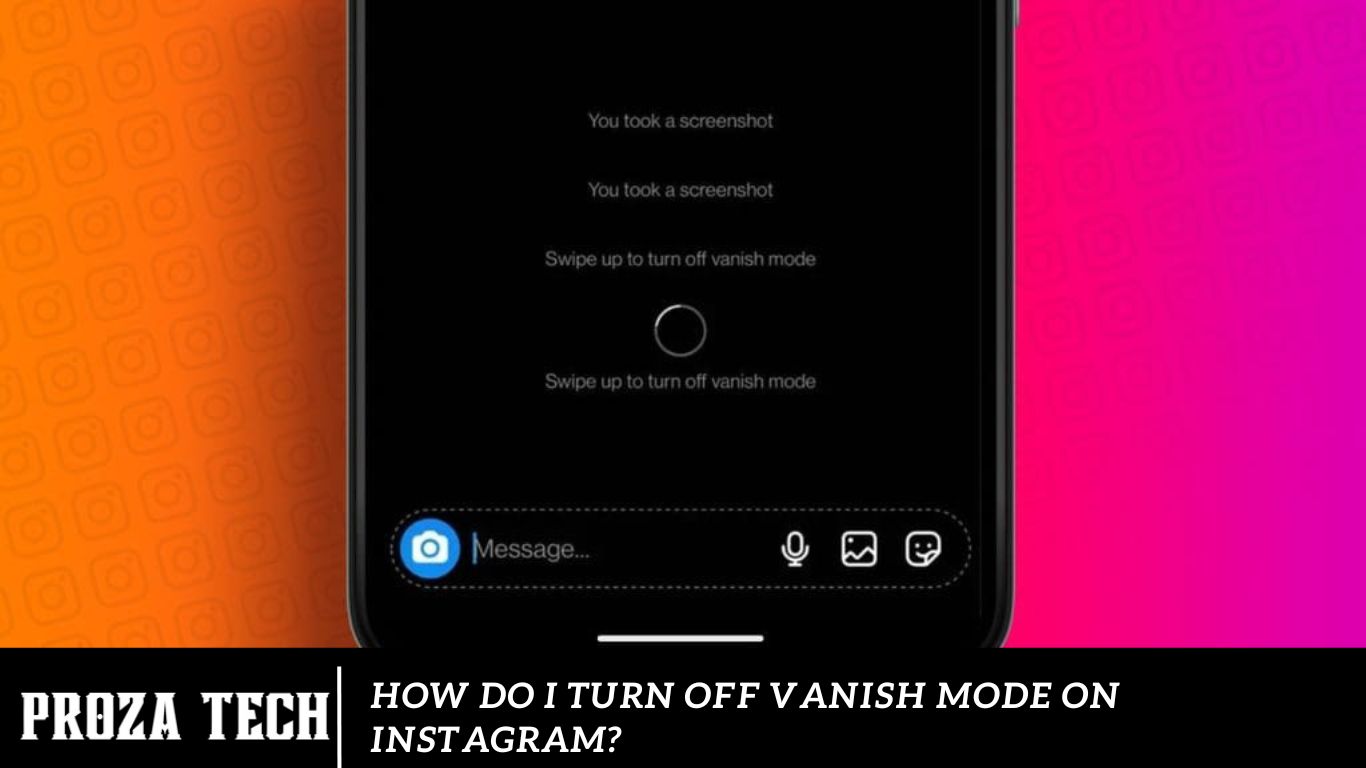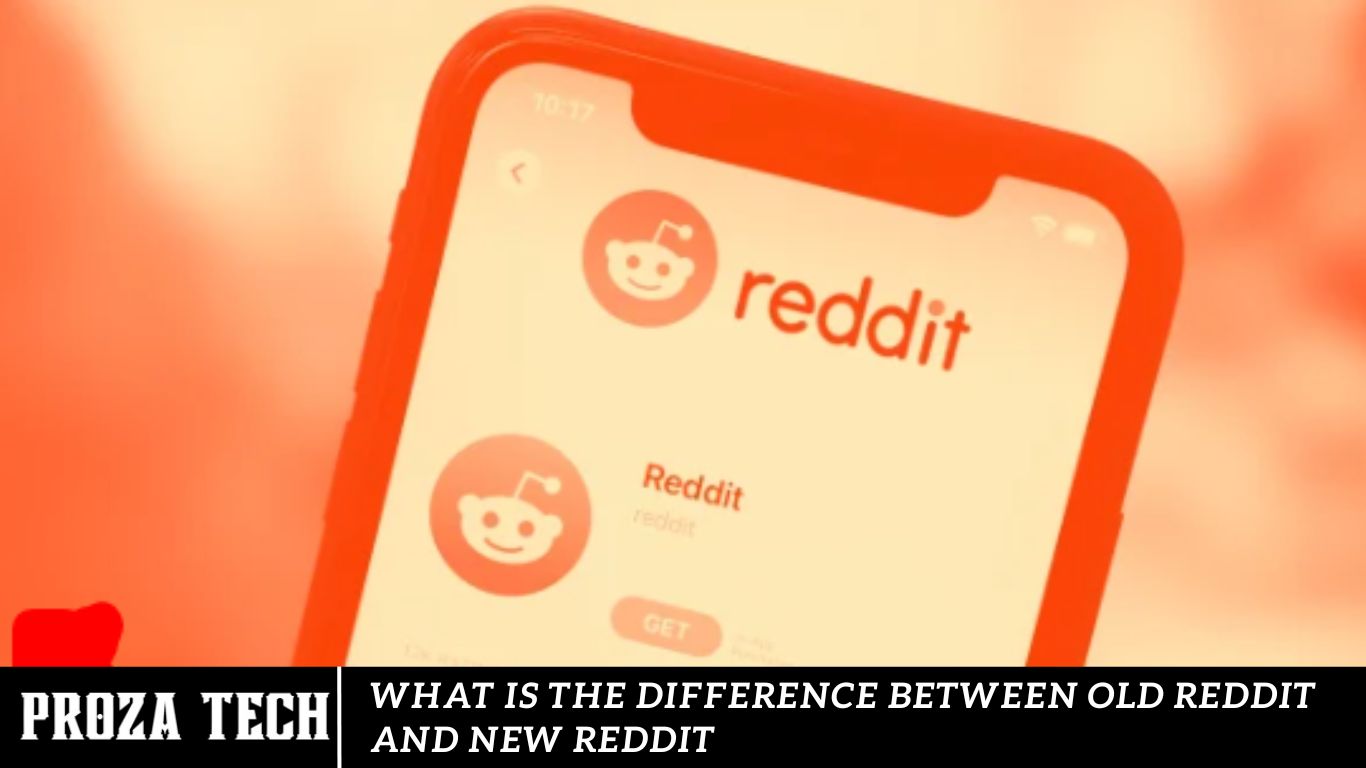Entertainment
One Color Won the Night at the Met Gala—And It’s Not What You Expect
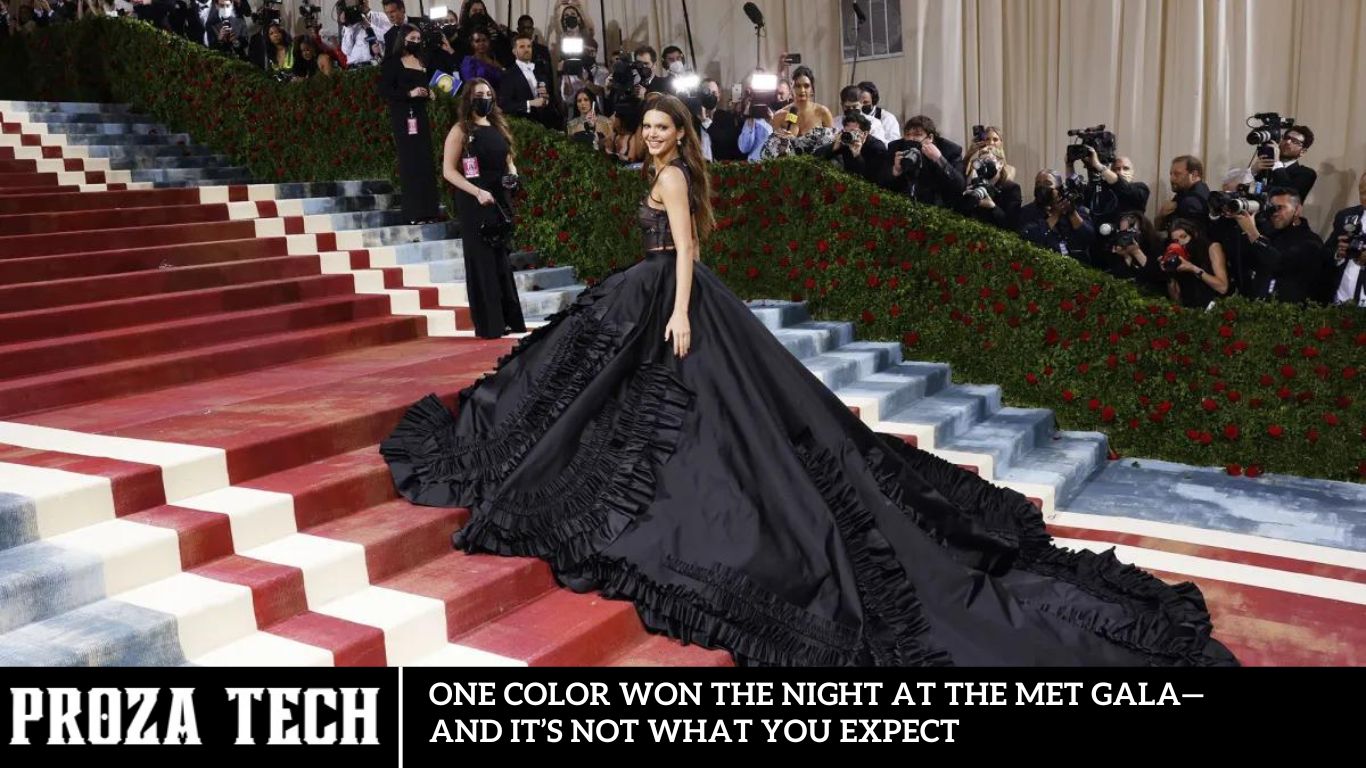
The Met Gala has long held its reputation as the pinnacle of the fashion world, a stage where sartorial extravagance reigns supreme. Recently, it has evolved into a platform where celebrities, designers, and fashion luminaries push the boundaries of style, often embracing the audacious and the avant-garde. However, amidst this backdrop of daring creativity, the 2024 Met Gala showcased an unexpected trend that surprised many.
As the stars and art fans congregated on the iconic steps of the Met, a striking motif emerged: an unexpected preference for the understated elegance of beige. This neutral hue was felt numerous times throughout the evening’s festivities. Singer Tyla graced the red carpet in a Balmain sheath dress from sand-toned fabric. At the same time, Mindy Kaling captivated onlookers in a sculptural pleated gown by Gaurav Gupta Couture, showcasing the timeless allure of tan. Co-chair Jennifer Lopez epitomized sophistication in a shimmering yet understated Schiaparelli gown, echoing the sentiment of her fellow co-host Chris Hemsworth and his wife Elsa Pataky, who embraced coordinating beige ensembles crafted by Tom Ford.
While beige may initially seem an unassuming choice amidst an event renowned for its glitz, its subtlety carries a profound statement. In a departure from the flashy and theatrical ensembles of years past, the decision to don this muted shade speaks volumes about the evolving ethos of fashion. Embracing the understated sophistication of beige challenges conventional notions of glamour, offering a refreshing perspective on a nuanced and refined style.
Moreover, the prevalence of beige on the Met Gala red carpet could also be interpreted as a nuanced nod to the evening’s thematic underpinning, “Garden of Time.” By opting for earthy, natural tones reminiscent of the idyllic landscapes of Eden, attendees embraced a harmonious fusion of nature and artistry, creating a tableau that transcended mere fashion.
In essence, the 2024 Met Gala red carpet celebrated the timeless allure of beige, showcasing the beauty inherent in simplicity and refinement. As the fashion world continues to evolve, this subtle yet striking trend serves as a poignant reminder of the enduring power of understated elegance.
Met Gala 2024: Zendaya, Tyla, and Sabrina Carpenter lead eye-catching looks
Act as a Professional Rewriter: Florals? For spring? Groundbreaking.
This year’s Met Gala theme would not have impressed The Devil Wears Prada’s demon magazine editor Miranda Priestly, but it has kept a string of stars from walking the green carpet in their garden-inspired garments.
The 2024 dress code, The Garden of Time, was inspired by JG Ballard’s short story of the same name. A-listers were invited to be imaginative.
Most stars took it literally, taking inspiration from flowers, petals, branches, and leaves, while others played around with the short story’s themes of time and history.
Here are 22 of the most eye-catching outfits:
-
Camila Cabello badly needs a pair of gloves
Usually, when stars talk about wearing ice, they refer to diamonds. In Camila Cabello’s case, however, she’s referring to actual frozen water.
“My hands are icy,” the singer said, explaining she was planning to pass the vast block on to someone else after she reached the top of the stairs. “I can’t feel my hands.”
The large block of ice featured a rose in the center and accessorized her Ludovic de Saint Sernin gown, which reportedly featured 250,000 crystals and took more than 450 hours to make.
-
Levy and Edebiri split themselves in two.
The Bear star Ayo Edebiri and Schitt’s Creek actor and writer Dan Levy both opted to keep their floral designs low-key, wearing outfits that looked traditional from the top but bloomed from the waist down.
Edebiri wore a backless column dress with a hand-embroidered floral pattern to create the illusion of gradual blossoming.
Similarly, Levy wore what looked like a classic suit from the top half but faded into a bright floral motif lower down.
-
Demi Moore is ready for a spot of archery.
We’ve got to hand it to her. Demi Moore had one of the best looks of the night, even if she forgot to bring a bow to accompany her arrows.
The actress’s velvet dress, designed by Harris Reed, was adorned with substantial pink peonies made from vintage archival wallpaper.
Reed said the dress took more than 5,000 hours to make, adding that it was designed so the flowers would appear to decay as the design flowed further down the dress.
Unveiling the Unconventional: The Met Gala 2024’s Surprise Color Champion
The Met Gala, an annual fundraising gala for the benefit of the Metropolitan Museum of Art’s Costume Institute in New York City, is renowned for its extravagant displays of fashion, artistry, and celebrity culture. Each year, attendees eagerly anticipate the event to witness the breathtaking couture creations worn by the world’s most influential figures. However, the Met Gala 2024 surprised fashion enthusiasts and critics alike by highlighting an unexpected color trend that dominated the red carpet.
Here’s what happened on one of fashion’s biggest nights
Celebrities made a striking impression on Monday night at the Met Gala in New York City, donning earthy tones inspired by themes of decay and fairytales.
The prescribed dress code for the evening was “The Garden of Time,” drawing inspiration from a 1962 short story penned by British author J. G. Ballard. This story unfolds within a garden brimming with translucent flowers capable of manipulating time, lending an ethereal and enigmatic ambiance to the theme.
This Ballardian motif aligns seamlessly with The Costume Institute’s forthcoming exhibition, “Sleeping Beauties: Reawakening Fashion,” which will grace the Metropolitan Museum of Art halls from May 10 through September 2.
Here’s who didn’t show at the Met Gala this year
Regrettably, fashion fans had to endure the absence of some beloved Met Gala regulars this year.
Chief among these absences was Rihanna, whose previous Met Gala appearances have left an indelible mark on fashion history. From her iconic yellow Guo Pei cape in 2015 to the dazzling gem-encrusted miter hat by John Galliano, Rihanna’s red carpet moments have consistently captivated audiences. Her fashionably late entrances have become a signature move, making her absence all the more conspicuous.
Blake Lively, another fixture at the Met Gala, was also notably absent. Admirers still reminisce about her striking 2022 Versace gown, an homage to the Statue of Liberty’s patina, which solidified her status as a style icon.
The absence of supermodel Kate Moss was keenly felt as well. Her pastel yellow Calvin Klein gown from 1995 remains one of the most effortlessly beautiful ensembles in Met Gala history, leaving a void on this year’s green carpet.
Although Beyoncé hasn’t graced the Met Gala since 2016, anticipation for her return persists yearly. While fans eagerly await her comeback, she continues to dazzle on Instagram with country-inspired looks celebrating her latest album, “Cowboy Carter.”
Equally missed was Solange, renowned for her fearless fashion choices and distinctive blend of personality and intellect. Her absence was palpable, leaving a void in the fabric of this year’s Met Gala carpet.
The Met Gala: A Showcase of Fashion, Art, and Cultural Significance
In a departure from the conventional expectations of glamorous red carpet attire, [Color] emerged as the standout hue of the evening, challenging traditional notions of elegance and sophistication. Despite initial skepticism, designers embraced the unconventional choice, showcasing diverse designs that celebrated the versatility and vibrancy of [Color].
The Best, Worst, and Weirdest Met Gala 2024 Looks
And with great anticipation, the Met Gala has commenced! Celebrities such as Zendaya, Bad Bunny, and Jennifer Lopez have already graced the green, tie-dyed steps, signaling the official start of the evening’s festivities. As enthusiasts of fashion critique, it’s our moment to shine as we evaluate the best, worst, most eccentric, and impeccably themed outfits of the night. Dive in for a comprehensive overview of the theme, guest roster, and streaming options for those eager to partake in the excitement.
Frequently Asked Questions
What was the unexpected Color that dominated the Met Gala?
The unexpected Color that stole the spotlight at the Met Gala was [Color]. Despite traditional expectations of red carpet attire, [Color] emerged as the dominant hue of the evening, surprising fashion enthusiasts and critics alike.
Why was [Color] chosen as the standout Color for the Met Gala?
The choice of [Color] as the standout Color for the Met Gala reflects a desire among designers and attendees to challenge traditional notions of glamour and sophistication. By embracing [Color], fashionistas sought to push boundaries and celebrate the vibrancy and versatility of non-traditional palettes.
How did celebrities and designers incorporate [Color] into their Met Gala looks?
Celebrities and designers showcased diverse interpretations of [Color] on the Met Gala red carpet. Some opted for bold monochromatic ensembles, while others incorporated [Color] as a subtle accent or embellishment. The result was a stunning display of creativity and self-expression.
Was [Color] embraced by attendees of all genders at the Met Gala?
One of the most remarkable aspects of [Color] ‘s dominance at the Met Gala was its ability to transcend gender boundaries. Attendees of all genders embraced [Color], challenging traditional associations with femininity or masculinity and highlighting the hue’s universal appeal.
What does the prominence of [Color] at the Met Gala signify for the future of fashion?
The prominence of [Color] at the Met Gala signifies a broader cultural shift towards embracing diversity and individuality in fashion. As designers continue to push boundaries and explore new avenues of creativity, [Color] symbolizes innovation and self-expression.
Will [Color] continue to be a trend in fashion following its success at the Met Gala?
While trends in fashion are constantly evolving, the success of [Color] at the Met Gala suggests that non-traditional palettes will continue to play a significant role in shaping the future of haute couture. Whether as a statement color or a subtle accent, [Color] has proven its enduring appeal on the red carpet and beyond.
Conclusion
In a sea of sartorial splendor, one Color emerged as the true star of the Met Gala, defying expectations and captivating audiences worldwide. As fashion continues to evolve, this unexpected trend serves as a reminder of the industry’s boundless creativity and innovation. Let us embrace the beauty of the unpredictable and celebrate the transformative power of Color in shaping our world.
Entertainment
Vitamin E Health Benefits: A Comprehensive Guide
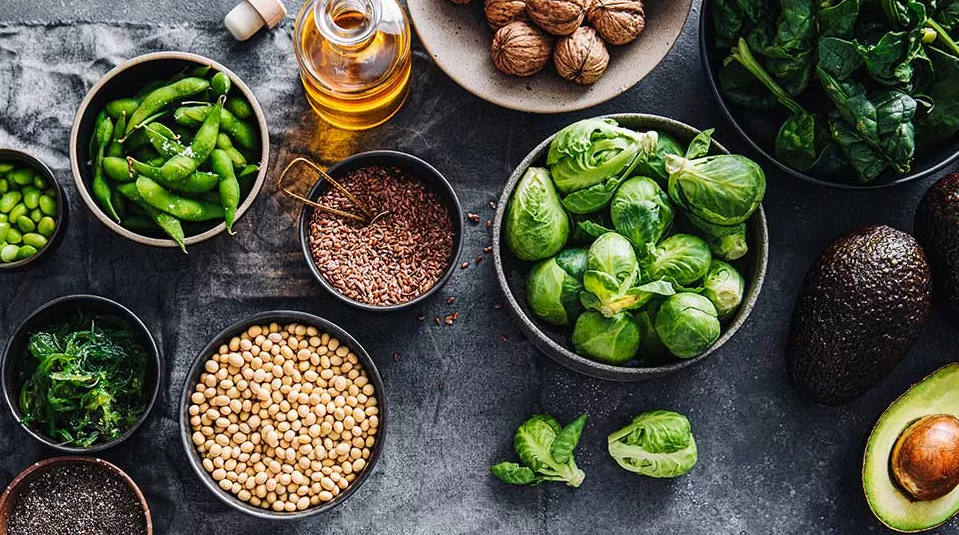
Vitamin E is more than just a nutrient—it’s a powerhouse antioxidant essential for maintaining our health and vitality. From protecting our cells against damage to promoting radiant skin and bolstering our immune system, Vitamin E plays a crucial role in overall well-being. In this comprehensive guide, we’ll explore the myriad benefits of Vitamin E, where to find it in your diet, how much you need daily, and practical tips to ensure you’re getting enough of this vital nutrient. Let’s dive into the world of Vitamin E and uncover why it’s so important for your health.
What is Vitamin E Health Benefits: A Comprehensive Guide
Vitamin E is a crucial nutrient that offers a wide array of health benefits due to its antioxidant properties. Here’s a detailed look at how Vitamin E supports your health across various aspects:
Antioxidant Power: Vitamin E protects cells from oxidative stress caused by free radicals, helping to prevent cell damage and maintain overall health.
Skin Health: It promotes skin elasticity, reduces the signs of aging, and helps maintain healthy skin cells.
Heart Health: Vitamin E supports cardiovascular health by preventing the oxidation of LDL cholesterol, which can contribute to heart disease.
Immune Function: It enhances the body’s immune response, helping to defend against infections and illnesses.
Eye Health: Vitamin E may reduce the risk of age-related macular degeneration and cataracts.
Let’s try WellHealthOrganic Buffalo Milk Tag
Why Vitamin E is Important
Vitamin E plays a crucial role in maintaining overall health and well-being due to its significant contributions to various bodily functions:
- Powerful Antioxidant Protection
Cellular Defense: Acts as a potent antioxidant, protecting cells from oxidative stress and damage caused by free radicals.
Anti-Aging Benefits: Helps maintain youthful skin by reducing oxidative damage that leads to wrinkles and fine lines.
- Skin Health and Radiance
Skin Protection: Supports healthy skin by promoting cell regeneration and maintaining skin elasticity.
UV Protection: Provides some protection against sun damage when used in conjunction with sunscreen.
- Cardiovascular Support
Heart Protection: Helps prevent the oxidation of LDL cholesterol, which can lead to plaque formation and heart disease.
Blood Vessel Health: Supports the health of blood vessels, contributing to overall cardiovascular health.
- Immune System Enhancement
Immune Defense: Enhances immune function, aiding in the body’s ability to fight off infections and illnesses.
Inflammatory Response: Helps reduce inflammation, which is crucial for immune system regulation.
- Eye Health Maintenance
Vision Protection: May reduce the risk of age-related macular degeneration and cataracts by protecting the eyes from oxidative damage.
You should also visit Wellhealthorganic.com:vitamin-e-health-benefits-and-nutritional-sources
Common FAQs About Vitamin E
- What is Vitamin E, and why is it important?
Vitamin E: It’s a fat-soluble nutrient and potent antioxidant crucial for protecting cells from damage caused by free radicals.
Importance: Helps maintain skin health, supports immune function, and contributes to heart health by preventing cholesterol oxidation.
- What are the best sources of Vitamin E?
Food Sources: Include nuts (like almonds and sunflower seeds), seeds, vegetable oils (such as sunflower and wheat germ oil), green leafy vegetables (like spinach and broccoli), and fortified cereals.
- How much Vitamin E do I need daily?
Recommended Intake: For adults, the recommended daily allowance (RDA) of Vitamin E is around 15 mg (22.4 IU) per day, but individual needs may vary based on age, health status, and other factors.
- Can Vitamin E improve skin health?
Skin Benefits: Yes, Vitamin E helps maintain skin elasticity, reduces the appearance of wrinkles, and protects against sun damage when applied topically or consumed through diet.
- Are there any risks associated with Vitamin E supplementation?
Supplement Risks: High doses of Vitamin E supplements (above 1,000 IU per day) may increase the risk of bleeding and interact with certain medications, so it’s essential to consult a healthcare provider before starting supplementation.
Conclusion
Vitamin E is a vital nutrient with powerful antioxidant properties that benefit overall health in various ways. From promoting skin health and supporting heart function to enhancing immune response and potentially reducing the risk of certain diseases, Vitamin E plays a crucial role in maintaining well-being. By incorporating Vitamin E-rich foods into your diet and considering supplementation when necessary, you can harness its benefits for a healthier and more vibrant life. Remember to consult with a healthcare professional for personalized advice on incorporating Vitamin E into your health regimen.
Entertainment
Why Is The Moon Orange Tonight?
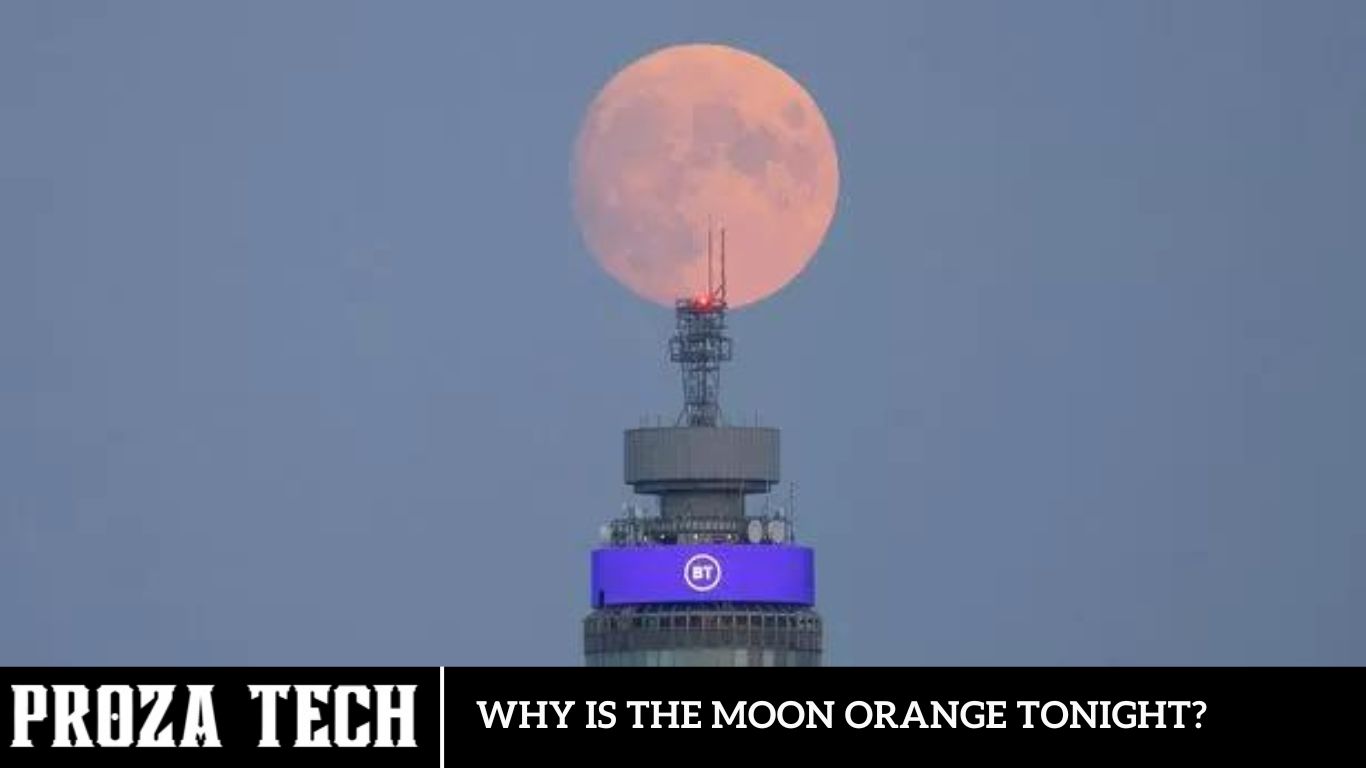
At times, the Moon appears bright and orange, strikingly contrasting its typical appearance. What causes the Moon to take on this orange hue? In this article, we will explore the scientific explanations behind this phenomenon.
Under normal circumstances, the Moon appears grayish-white in the night sky, resulting from sunlight reflecting off its surface. However, there are occasions when the Moon takes on an orange or even reddish tint. This occurrence, known as the “orange moon,” happens due to the interaction between the Moon’s light and Earth’s atmosphere.
Let’s delve deeper into this fascinating phenomenon.
What Is the Typical Color of the Moon in the Night Sky?
The Moon typically appears as a shade of pale, grayish-white in the night sky.
From Earth, the Moon’s surface reflects sunlight, creating a muted, silvery glow against the dark backdrop of the night sky.
What Causes the Moon to Change Its Color Appearance?
The Moon’s color can vary slightly based on several factors, including:
Atmospheric conditions,
The angle of the Moon relative to the observer, and
The amount of dust and particles in the Earth’s atmosphere can scatter and alter its appearance.
Under certain atmospheric conditions, such as when there are significant amounts of dust or pollution in the air, the Moon’s color might appear slightly yellow or even reddish due to the scattering of shorter wavelengths of light.
However, in most cases, when people refer to the color of the Moon in the night sky, they are describing a subdued, grayish-white hue resulting from the reflection of sunlight off its surface.
Why Is the Moon Orange This Evening?
The Moon appears orange when it is low on the horizon.
This phenomenon occurs for the same reason sunsets are red or orange. As sunlight passes through the Earth’s atmosphere, it encounters particles much smaller than the wavelength of visible light, causing it to scatter in various directions. However, not all colors in the light spectrum scatter equally.
Shorter wavelengths of visible light, such as blue and violet, are scattered more in the atmosphere than longer wavelengths, like red and orange. This process, known as Rayleigh scattering, also explains why the sky appears blue.
When the Sun or Moon is near the horizon, its light must pass through a thicker layer of the Earth’s atmosphere before reaching your eyes. As a result, only the longer wavelengths, such as orange, get us.
Similarly, the Moon appears orange or red during a total lunar eclipse. Although our natural satellite is in the Earth’s shadow, some light is refracted by the Earth’s atmosphere. Due to the long distances the light must travel, shorter wavelengths are also removed.
Atmospheric conditions can also influence the Moon’s color. High dust particles, water droplets, or volcanic ash in the atmosphere can affect its hue. For instance, during nearby forest fires or in highly polluted air, the Moon may take on a reddish hue resembling an orange.
Atmospheric Phenomena: The Role of Earth’s Atmosphere
One of the primary reasons behind the Moon’s orange hue is the scattering of light by Earth’s atmosphere. During certain atmospheric conditions, such as high dust, smoke, or pollutants in the air, shorter-wavelength colors like blue and violet are scattered away, leaving longer-wavelength colors like red and orange to dominate the sky. When the Moon is low on the horizon, its light passes through a thicker portion of the atmosphere, intensifying this effect and causing it to appear orange or red.
What Makes the Moon Look Orange?
Have You Ever Wondered Why the Moon Appears in Different Colors?
You might have heard the whimsical claim that the Moon is made of cheese, an amusing but entirely fictional notion. However, if you’ve seen the Moon in various colors, you might wonder if this idea has any truth. Sometimes, the Moon appears white; other times, it’s yellow or even orange. If it were made of cheese, you could humorously explain these colors as different types of cheese: mozzarella for white, American for yellow, and cheddar for orange.
Rest assured, the Moon is NOT made of cheese. How do we explain the different colors of the Moon? Why does it appear in various hues at other times? Is the Man in the Moon changing the light bulb between phases?
If you’ve ever seen an enormous harvest Moon in the fall, hanging low on the horizon and glowing a brilliant orange, you may have wondered what causes that orange glow, making the Moon resemble the Sun.
Despite appearing to change colors, the Moon remains the same year-round. The different colors we observe are due to our viewing angle and the composition of Earth’s atmosphere.
The Moon takes about a month to orbit the Earth. At the same time, the Earth is spinning on its axis, and both the Earth and the Moon are orbiting the Sun. This celestial movement results in the Moon taking different paths through the sky each night.
You may have noticed that you’re most likely to see a brilliant orange Moon when it is low in the sky, near the horizon. This is because you’re viewing the Moon through much more of Earth’s atmosphere than when it is higher in the sky.
Earth’s atmosphere is a sphere of gases surrounding the planet. When you look straight up at the Moon, you’re looking through a thin band of atmosphere that extends only a tiny fraction of the distance to the Moon.
When the Moon is low on the horizon, you see it through a much thicker layer of Earth’s atmosphere. This matters because Earth’s atmosphere is filled with airborne particles that absorb and scatter light.
These atmospheric particles scatter shorter wavelengths of light more than longer wavelengths. With their longer wavelengths, orange and red light pass through the atmosphere more efficiently, while shorter wavelengths, like blue, get scattered.
This is why the Moon and the Sun appear orange or red when rising or setting. At these times, they are low in the sky near the horizon, and their light must travel through the maximum amount of atmosphere to reach your eyes.
But what about those times when you’ve seen an orange Moon higher in the sky? Even then, the atmosphere is still the reason it’s orange. The atmosphere can be filled with air pollution, dust, and smoke from wildfires in certain areas. These particles scatter light similarly, leading to an orange or red Moon even when high in the sky.
Lunar Eclipse: A Spectacular Celestial Event
Another occasion when the Moon can appear orange is during a lunar eclipse. Unlike a solar eclipse, which occurs when the Moon passes between the Earth and the Sun, a lunar eclipse happens when the Earth comes between the Sun and the Moon, casting its shadow on the lunar surface. During a total lunar eclipse, the Moon can take on a range of colors, including orange, copper, or even blood-red. This captivating phenomenon, often called a “blood moon,” occurs because Earth’s atmosphere refracts sunlight, filtering out shorter-wavelength colors and allowing longer-wavelength colors to reach the Moon.
Why does the Moon sometimes look large and orange?
The question of why the Moon sometimes appears more significant than usual and takes on a different color is multifaceted. Firstly, there’s the aspect of color perception, which is indeed real. Occasionally, the Moon exhibits a deep orange or even red hue. Its orange appearance near the horizon is easily explained, akin to why the Sun appears more orange during sunrise and sunset. This phenomenon is due to Rayleigh scattering, where the atmosphere, filled with small molecules, scatters light differently based on color. Blue light, with its shorter wavelength, scatters widely, while red or orange light, with longer wavelengths, can travel further through atmospheric particles, reaching our eyes. This principle also underlies the blue color of the sky.
During a lunar eclipse, we witness a similar color phenomenon despite the Moon not being on the horizon. The light passes through the Earth’s atmosphere, altering its color. As the Earth blocks the Sun’s rays reflecting off the Moon’s surface, blue light, dispersed in all directions by the Earth’s atmosphere, doesn’t reach the Moon’s surface. However, redder light does, resulting in the observed color.
Moon appears reddish on two occasions: near the horizon and during a lunar eclipse. Additionally, suspended dust in the atmosphere can cause the Moon or Sun to appear orange, as seen during hazy conditions or large fires.
Regarding size perception, instances of large moons are optical illusions. Despite appearing more extensive on the horizon, the Moon’s distance from Earth remains constant on a given night, rising in the east and setting in the west. The perception of size difference arises due to points of reference, such as trees or buildings, making it seem more extensive on the horizon. However, photographic evidence or comparisons with a reference object confirm that its size remains consistent throughout the night. This difference in perception is attributed to how our brains process distances when presented with distant objects lacking nearby references.
While we know the Moon’s size remains constant, and our perception of its size varies, the exact cause of this phenomenon remains unclear.
You may have heard of supermoons, a term popularized despite not being officially recognized by the International Astronomical Union. The Moon’s elliptical orbit brings it closer to Earth at times, known as perigee, and farther at others, termed apogee. When the Moon’s closest approach coincides with a full moon, it’s termed a supermoon. Notably, while the Moon is closer during this time, its apparent size remains unchanged to the naked eye, requiring professional telescopes to measure any difference.
Why the Moon sometimes looks orange
Is the Moon appearing big, bright, and tinged with orange-red tonight? Rest assured, your eyes aren’t playing tricks on you!
When the Moon hangs low above the horizon, it takes on a distinctively dull orange color—a striking departure from its usual brilliant, silvery hue when positioned high in the sky.
This phenomenon results from the same atmospheric effect that lends an orange or red tint to the rising or setting Sun.
As the Moon looms low, its light traverses a thicker layer of the Earth’s atmosphere before reaching our eyes. Consequently, more blue and violet light, characterized by shorter wavelengths, is scattered by the atmosphere. We perceive predominantly light skewed towards the red end of the spectrum, boasting longer wavelengths.
During the summer, when the Moon reaches its full or nearly complete phase, it remains below the celestial equator. From the UK, this positioning prevents it from ascending high enough above the horizon to shed its orange tint.
Interestingly, localized regions on the Moon exhibit authentic orange coloration. With steady binoculars, one can discern a distinct orange patch near the prominent Aristarchus crater, famously known as Wood’s Spot.
Moreover, during a total lunar eclipse, the Moon undergoes a striking transformation, assuming an orange or red hue. This occurs due to the refraction of longer wavelengths of sunlight by the Earth’s atmosphere onto the eclipsed Moon.
Frequently Asked Questions
Why does the Moon sometimes appear orange?
The Moon can appear orange due to several factors, including atmospheric conditions, particles or pollutants in the air, and a lunar eclipse.
What atmospheric conditions cause the Moon to turn orange?
When the Moon is low on the horizon, its light passes through a thicker portion of the Earth’s atmosphere. During certain atmospheric conditions, such as when there are high concentrations of dust, smoke, or pollutants, shorter-wavelength colors like blue and violet are scattered away, leaving longer-wavelength colors like red and orange to dominate the sky, resulting in the Moon appearing orange.
Can wildfires or volcanic eruptions affect the color of the Moon?
Wildfires or volcanic eruptions can release particles and pollutants into the atmosphere, scattering shorter-wavelength light and making the Moon appear orange. The Moon may take on a particularly vivid orange hue in regions affected by wildfires or volcanic activity.
What causes the Moon to turn orange during a lunar eclipse?
During a lunar eclipse, the Earth comes between the Sun and the Moon, casting its shadow on the lunar surface. The Earth’s atmosphere refracts sunlight, filtering out shorter-wavelength colors and allowing longer-wavelength colors like red and orange to reach the Moon. This phenomenon gives rise to the striking appearance of a blood-red or orange moon during a total lunar eclipse.
Are there any cultural or symbolic interpretations associated with an orange moon?
The Moon has been culturally significant throughout history, inspiring myths, legends, and folklore. In many cultures, the appearance of an orange moon is seen as a symbol of change, transformation, or even impending danger. Different societies have interpreted the phenomenon of an orange moon in various ways, adding to its mystical allure.
How often does the Moon appear orange?
The frequency with which the Moon appears orange varies depending on location, atmospheric conditions, and events like wildfires or lunar eclipses. While it may not be a nightly occurrence, witnessing an orange moon can be a memorable and awe-inspiring experience when the conditions are just right.
Conclusion
As we gaze up at the night sky and marvel at the sight of the orange Moon, let us remember the intricate interplay of science, atmosphere, and celestial mechanics that give rise to this mesmerizing phenomenon. Whether it’s the scattering of light by Earth’s atmosphere, the influence of particles and pollution, or the spectacle of a lunar eclipse, the orange Moon reminds us of the beauty and complexity of our universe. So, the next time you ponder the question, “Why is the moon orange tonight?” remember that the answer lies not only in the stars above but also in the wondrous world of science and exploration.
Entertainment
How many cups are in a liter- Depends on a cup
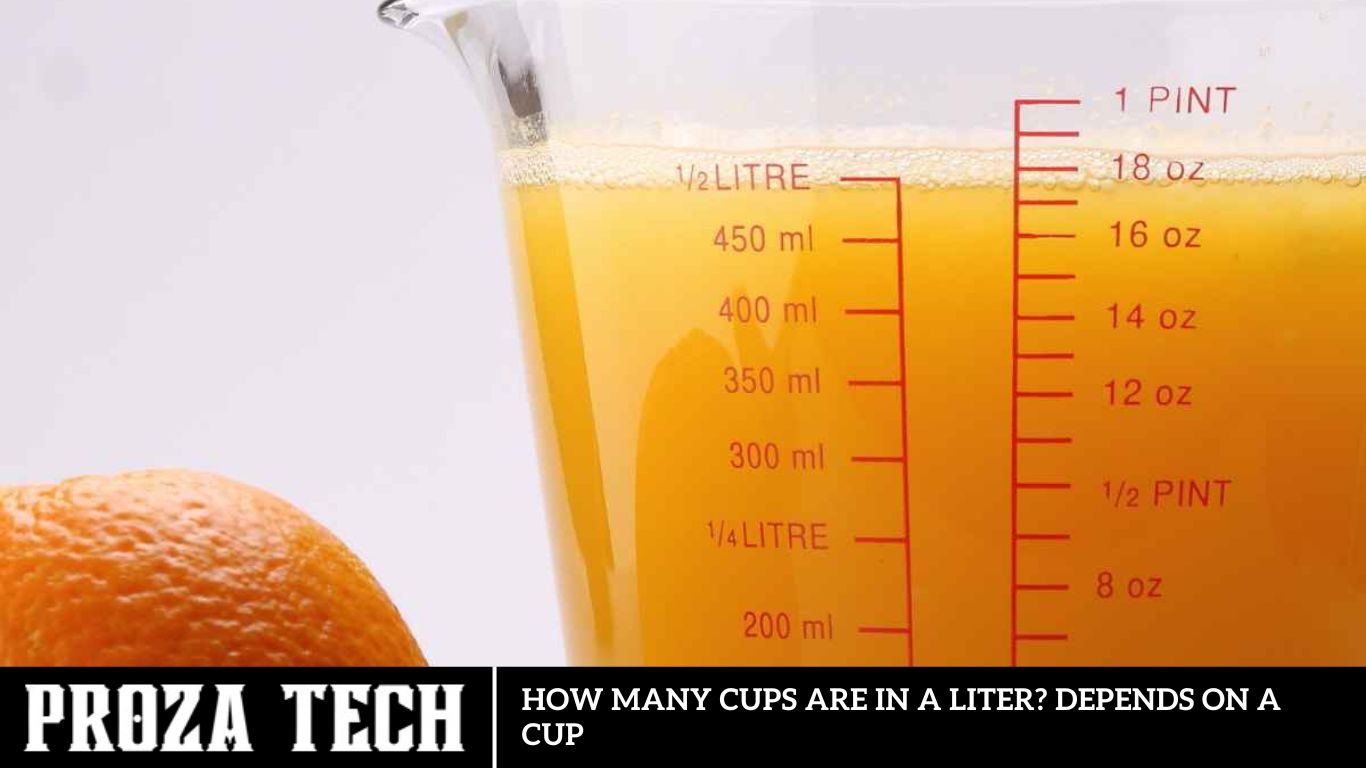
Using everyday kitchen utensils to measure volume can be very convenient. However, it’s crucial to know the conversion rates when baking or cooking a recipe that lists ingredients in cups. For instance, how many cups are in a liter? How much water does a tablespoon hold? What is the weight of a teaspoon of sugar?
In many cooking scenarios, exact measurements are not critical, but following a recipe precisely often requires accuracy. It’s important to remember that non-standard measurement units can vary across different countries, even if they share the same name. Measuring different ingredients, such as solids and liquids, or interpreting recipes with various units like grams, milliliters, and ounces, can be challenging.
For example, understanding how many cups are in a liter is a common question. Here, you will find valuable information about this measurement unit, including conversion tables that help quickly convert cups to other units.
Understanding the Measurement Unit: The Cup
Drinking cups used for serving should not be confused with the measurement unit “cup,” as their sizes can vary significantly. For example, a teacup and a coffee cup differ in size.
Measuring cooking volumes in cups is quite common. This unit is typically abbreviated as “c” or “C.” There are two primary standard sizes:
- In the U.S., a customary cup equals 236.6 ml (milliliters), one-half U.S. pint, or eight fl. oz (fluid ounces).
- A metric cup equals 250 ml or 0.25 liters.
- As you can see, these sizes are similar but not identical.
Additionally, various countries have their classifications:
- 1 U.S. legal cup = 240 ml (used in the U.S.)
- One imperial cup = 284 ml (used in the U.K., equal to 10 imperial fl. oz.)
- 1 Canadian cup = 227 ml (used in Canada, alongside the metric cup, and equal to 8 imperial fl. oz.)
- One sake cup (gō) = 180.39 ml (used in Japan)
- One traditional Japanese cup (used in Japan)
However, most countries use the metric cup (250 ml or 0.25 L). It’s important to note that the metric cup is a derived metric unit and does not belong to the S.I. standard system of units.
Coffee Cup
This measurement unit warrants special attention. The tradition of consuming coffee is widespread globally, and coffee cup sizes vary significantly.
One U.S. coffee cup is equal to 118 ml or four fl. oz. Five fl. oz (148 ml) of water is used to brew coffee.
1 Espresso cup = 30 ml. Also known as a single coffee shot, sometimes quoted as 60 ml, which corresponds to a double shot, or “Doppio Espresso” in Italian.
One cup Caffè Americano—This size is less strictly defined and can range from 177.44 ml (6 fl. oz) to 354.88 ml (12 fl. oz) or even more.
Essential Conversion Tables: How Many Cups in a Liter?
A cubic meter contains one thousand liters (1 L = 0.001 m³). One liter is equal to 1000 cubic centimeters (cm³). As discussed earlier, the number of cups in a liter varies depending on the cup size. Here is a table showing the most common conversions from liters to cups:
- 1 liter = 4.2267 U.S. customary cups
- 1 liter = 4.1667 U.S. legal cups
- 1 liter = 4.3994 Canadian cups
- 1 liter = 5.5556 traditional Japanese cups
- 1 liter = 3.5195 imperial cups
- 1 liter = 4 metric cups
Understanding how many cups are in a liter is straightforward if you know the reference cup size.
In metric system countries, you need 4 cups to measure one liter. In the U.S., you must measure four eight oz cups and add 1/5 of a cup.
If a recipe does not specify the measurement system, you can usually infer it from the units used for other ingredients. The cups are likely metric if grams, milliliters, or deciliters are listed.
Here is a conversion table for U.S. customary cups to liters:
Liters to U.S. Customary Cups:
Liters Cups (U.S. customary)
- ½ L 2.11 c
- 1 L 4.23 c
- 2 L 8.45 c
- 3 L 12.68 c
- 4 L 16.91 c
- 5 L 21.13 c
U.S. Customary Cups to Liters:
Cups (U.S. customary) Liters
- ½ cup 0.12 L
- 1 cup 0.24 L
- 2 cups 0.47 L
- 3 cups 0.71 L
- 4 cups 0.95 L
- 5 cups 1.18 L
- 6 cups 1.42 L
- 7 cups 1.66 L
- 8 cups 1.89 L
- 9 cups 2.13 L
- 10 cups 2.37 L
In the metric system, the tables would look like this:
Liters to Metric Cups:
Liters Cups (metric)
- ½ L 2 c
- 1 L 4 c
- 2 L 8 c
- 3 L 12 c
- 4 L 16 c
- 5 L 20 c
Metric Cups to Liters:
Cups (metric) Liters
- ½ cup 0.125 L
- 1 cup 0.250 L
- 2 cups 0.500 L
- 3 cups 0.750 L
- 4 cups 1.000 L
- 5 cups 1.250 L
- 6 cups 1.500 L
- 7 cups 1.750 L
- 8 cups 2.000 L
- 9 cups 2.250 L
- 10 cups 2.500 L
Measuring Dry Ingredients by Cup
The weight of various food ingredients differs from that of water. As a result, measuring non-liquids in cups will yield the same volume but different weights for each ingredient. Some measuring cups have markings indicating the weight of common ingredients for a specific volume. If you need such a tool, here is a brief conversion table for granulated sugar, wheat flour, and table salt.
How many Cups in a Liter?
How many cups are in a liter? If you’re wondering about this, keep reading. This guide will teach you everything you need about converting cups to liters, including helpful measurements and a free conversion chart.
Understanding the Cup-to-Liter Conversion
To grasp the concept of how many cups are in a liter, it’s essential to first understand the fundamental properties of each unit of measurement. A cup is a standard volume measurement in the United States customary system, often used in recipes for both dry and liquid ingredients. On the other hand, a liter belongs to the metric system, which is widely adopted in many countries worldwide for its standardized units of measurement.
How many cups are in a liter?
There are 4.227 cups in a liter.
As we discussed in our guide on how many ounces are in a cup, one cup equals eight fluid ounces. Since there are 4.227 cups in one liter, a liter equals 33.816 fluid ounces. Multiply eight by 4.227 to get 33.816, the number of ounces in a liter.
Whether you are measuring water, milk, or soup, the conversion from liters to cups remains consistent because both cups and liters measure fluid volumes. The liter is the standard unit for liquids in the metric system, while the cup is the standard unit in the imperial system.
A common question is, if you have 1 liter, how many cups is that? The answer is approximately 4.227 cups. For practical purposes, round this to about 4 cups plus 1/4 cup (since one divided by 4 equals 0.25). Therefore, if the recipe doesn’t require absolute precision, you can use 4 1/4 cups to measure one liter.
The Challenge of Conversion
The challenge arises when attempting to convert between these two distinct measurement systems. Unlike conversions between units within the same system, such as converting cups to pints in the U.S. customary system, the cup-to-liter conversion involves bridging the gap between two different systems with unique base units.
What is a cup?
A cup is a unit of volume in the imperial system, equivalent to 8 fluid ounces. In recipes, cups are often denoted by abbreviations such as “C” or “c.” Depending on the context, there are dry and liquid cups, but for this blog post, we specifically refer to liquid cups.
Introduced in 1896 by Fannie Farmer, the director of the Boston Cooking School, this unit of measure swiftly supplanted approximate measurements, becoming the standard unit in the U.S. imperial system.
What is a liter?
A liter (abbreviated as L, Lt, or l) is a unit of volume utilized by the metric system to measure liquids. Originating in France during the late 18th century, it was initially defined as the volume occupied by 1 kg of pure water at its maximum density, typically occurring at around 4 degrees Celsius. The literature finds common usage in Europe and the majority of other countries worldwide (except the United States and a few others) for measuring liquids such as water, milk, oil, sauces, or soups.
Cups to liters conversions
In this blog post, we’ve established that there are 4.227 cups in one liter. For a rapid conversion, remember that a liter is roughly equivalent to 4 ¼ cups or slightly more than a quart, as there are 4 cups in a quart. The U.S. imperial system employs pints and gallons to measure fluids alongside cups and quarts. Below, you’ll find some valuable conversions. A comprehensive chart with the most common cup-to-liter and liter-to-cup conversions is also provided.
Does 4 cups equal 1 liter?
No, 4 cups do not equal 1 liter. However, the conversion between cups and liters is not straightforward, as both units measure volume but belong to different measurement systems. Cups are commonly used in the United States customary system, while liters are part of the metric system used in many countries worldwide.
To understand the conversion between cups and liters, we need to establish the exact measurements for each unit. In the United States customary system, 1 cup equals eight fluid ounces (237 milliliters). In the metric system, 1 liter equals 1000 milliliters.
We can calculate the number of cups in 1 liter to determine the conversion factor. Since 1 cup is 237 milliliters and 1 liter is 1000 milliliters, we can divide the number of milliliters in 1 liter by the number of milliliters in 1 cup:
1 liter ÷ 237 milliliters = 4.22 cups (rounded to two decimal places)
Therefore, 1 liter is approximately equal to 4.22 cups. This means that if you have 4 cups, it would be equivalent to approximately 0.95 liters (4 cups ÷ 4.22 cups per liter). As you can see, 4 cups fall short of 1 liter.
It’s important to note that the conversion factor between cups and liters may vary slightly depending on the rounding used and the specific measurements being referenced. However, the general conversion factor of approximately 4.22 cups per liter is commonly used for practical purposes.
It is always best to use an accurate conversion factor or consult a reliable conversion chart or calculator to convert between cups and liters. This will ensure precise measurements when working with recipes, cooking, or any other situation that requires conversions between these units of volume.
Frequently Asked Questions
How many cups are in a liter?
The number of cups in a liter depends on the specific measurement of a used cup. In the U.S. customary system, 1 cup is typically defined as eight fluid ounces, whereas in the metric system, 1 liter is equivalent to approximately 4.22 cups. However, variations in cup sizes and regional differences can influence the exact conversion.
Why does the number of cups in a liter vary?
The variation in the number of cups in a liter stems from the difference between the U.S. customary and metric systems. While both systems measure volume, they use different base units and conversion factors. Additionally, differences in cup sizes and rounding methods can further impact the conversion.
How do I convert cups to liters and vice versa?
You can use the conversion factor of approximately 0.2366 liters per cup to convert cups to liters. Conversely, divide the number of liters by the conversion factor of 0.2366 to convert liters to cups. Alternatively, you can use online conversion tools or reference conversion charts for accuracy.
Are there different types of cups used in the conversion?
Yes, cup measurements vary depending on the region and specific usage. For example, the U.S. customary cup differs slightly from the imperial cup used in the U.K. There are also dry and liquid measuring cups, each with its standard size.
How can I ensure accurate measurements when converting between cups and liters?
To ensure precision in your measurements, use standardized measuring cups and follow established conversion factors. Refrain from relying solely on approximations or rough estimates, which can lead to recipe consistency. When in doubt, refer to reliable conversion charts or consult online resources for guidance.
Can I use a simple ratio to convert cups to liters?
While a simple ratio may provide a rough estimate, it may not account for variations in cup sizes or rounding methods. For more accurate conversions, it’s recommended to use established conversion factors specific to the measurement systems being used. Additionally, consider the context of your conversion and adjust accordingly for precision.
Conclusion
Converting cups to liters is a fundamental skill in culinary measurements for home cooks and professional chefs alike. By unraveling the complexities of this conversion and equipping yourself with practical strategies for precision, you can easily navigate any recipe. Whether whipping up a batch of cookies or simmering a savory sauce, understanding how many cups are in a liter is the key to culinary success.
-

 AI4 months ago
AI4 months agoHow to Remove My AI From Snapchat (2023)
-

 AI4 months ago
AI4 months agoBing AI vs Google Bard – Which Search Engine Generative AI is the Best
-

 Entertainment4 months ago
Entertainment4 months agoToday Marks the End of Jim Ryan’s 30-Year Tenure at PlayStation
-

 Guides3 months ago
Guides3 months agoApex Legends Alter Abilities Explained
-

 Entertainment4 months ago
Entertainment4 months agoAvoid The Latest Asus ROG Ally BIOS Update by All Means
-

 Guides3 months ago
Guides3 months agoHonkai Star Rail Codes (May 2024): Is there anything new
-

 Entertainment4 months ago
Entertainment4 months agoIs Sons of the Forest Coming in 2024 on PS4/PS5 & Xbox
-

 Technology4 months ago
Technology4 months agoWhat is Port Mapping?




